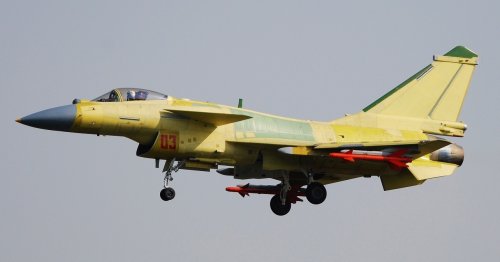As we’re getting ready for the Air Force Association show in Washington (or rather, at a remote location in Maryland) next week, it’s an opportune time to look at US fighter force planning.
The Joint Strike Fighter Selected Acquisition Report, released at the end of March, included year-by-year production plans for the Pentagon, updated to take account of the cutbacks in low-rate initial production (LRIP) numbers announced at the beginning of the year. Those adjustments keep LRIP rates moderate through the 2014 buy year (2016 delivery, LRIP-9) which sees only 29 aircraft ordered by the Pentagon.
Thereafter, Air Force orders increase sharply: 32 in 2015, 48 in 2016 and 2017 and three years at 60 per year. The USAF is shown buying 80 jets in 2021 and continuing that rate until the end of the planned production program.
At the same time, the SAR shows unit procurement costs (average procurement unit costs, base-year 2012) declining from scary levels in 2014 ($184 million for the F-35A) to barely more than half that in the 2018 buy.
There is one snag. The Air Force’s own statements about its plans don’t support the rates in the SAR.
Former chief of staff Gen Norman Schwartz warned of this in June, saying: “If the aircraft gets cheaper, we’ll buy more. If it gets more expensive, we’ll buy less.”
Just before the DoD released the SAR, two USAF planners told the House Armed Services Committee that the USAF’s goal for the fighter force is 1,100 primary mission aircraft. Including aircraft used for training and test and aircraft in depot maintenance, this calls for a total inventory of 1,900 fighters. (Download here.)
The USAF planners also talked about how many existing aircraft the USAF expects to be in service in 2030. The service will still have 242 A-10s. As many as 249 F-15C/Ds could be retained – at least 175 will be kept until 2035 and possibly all of them. The 220-jet F-15E fleet will last through 2030.
In a little-publicized development in April, the USAF named Lockheed Martin as the sole qualified source for the the Combat Avionics Programmed Extension Suite (Capes) program. This is linked to the F-16 service life extension program, intended to increase the F-16’s lifetime from 8,000 to 10,000 equivalent flight hours. The first of about 350 Slep aircraft, modified from Block 40/50 aircraft, is due to enter service in 2017.
Capes includes an active electronically scanned array radar, Terma ALQ-213 electronic warfare management system, a new large-format center pedestal display, an integrated broadcast system (IBS) receiver and other improvements on 300-350 life-extended F-16C/D Block 40/42/50/52 fighters. IOC for Capes is expected in late 2018 and the modifications are due to be complete in late 2022.
The AESA will be based on Raytheon’s Racr or incumbent Northrop Grumman’s Sabr, a choice to be made separately by the USAF. A draft request for proposals is due imminently. Export customers such as Taiwan and Korea (which has selected BAE Systems to upgrade its F-16s) will follow the US lead on AESA, raising the initial market to around 600 radars, the biggest single AESA deal after JSF.
Bottom line: including F-22s, the USAF plans to keep around 1,200 of its current inventory fighters in service until 2030, implying that it will have some 700 F-35s. But the SAR shows the USAF buying 1,050 JSFs through 2028, the 2030 delivery year.
How do you reconcile the numbers? If the USAF buy rate rises to 48 in 2016, as planned, and then holds at that number, the total buy through 2028 is just over 750 aircraft. And, oddly enough, 48 a year is exactly what the USAF said it could afford, more than four years ago.
Does this necessarily mean a catastrophic rise in unit costs? No, for three reasons: first, the Department of the Navy and international partners are still involved, and second, acquisition costs are not as rigidly determined by rate as some people think. (If that were not the case, Boeing would not be able to build the Super Hornet for less than the lowest projected cost for the F-35A.) Third, this doesn't affect deliveries until 2020 (the 2018 buy).
On the other hand, both this and any further slips and delays in partner buys are bad news for companies that invested heavily in breaking into JSF, in hopes of deliveries topping the 200 mark in 2017 – as Lockheed Martin was promising in Canada less than two years ago. And if production is not going to be underpinned by 80 USAF jets per year, the process of adapting to that reality needs to start now.



